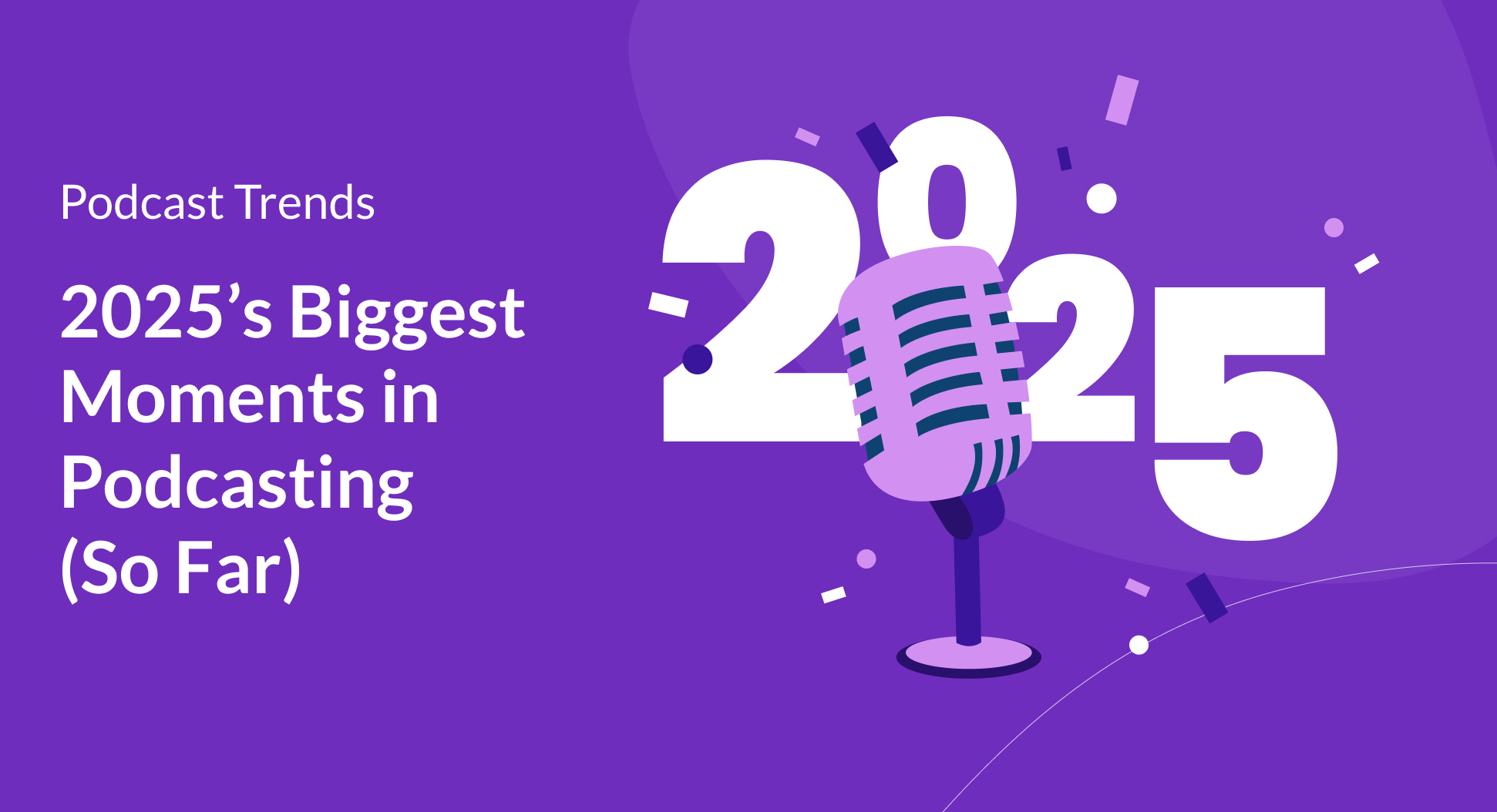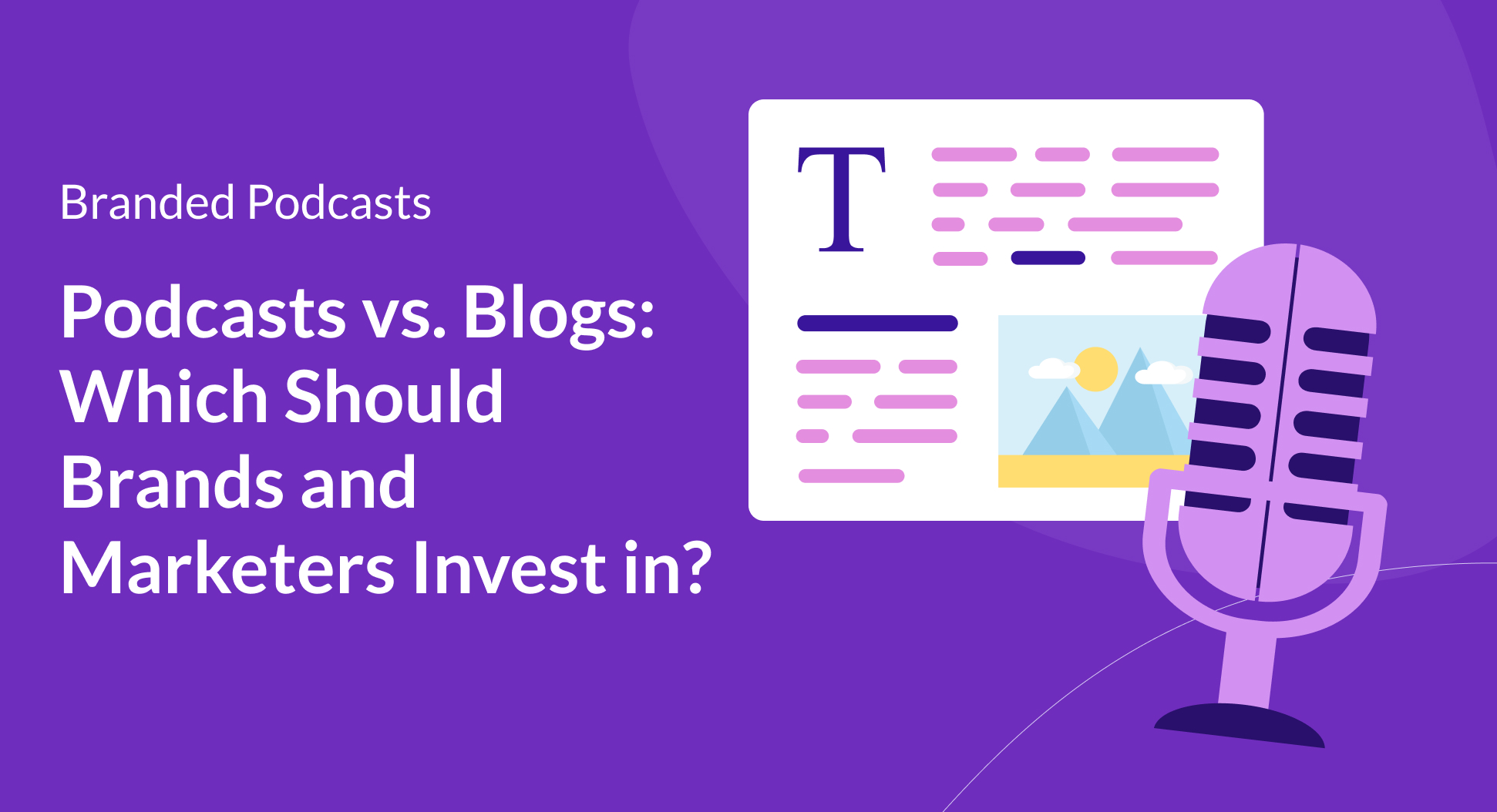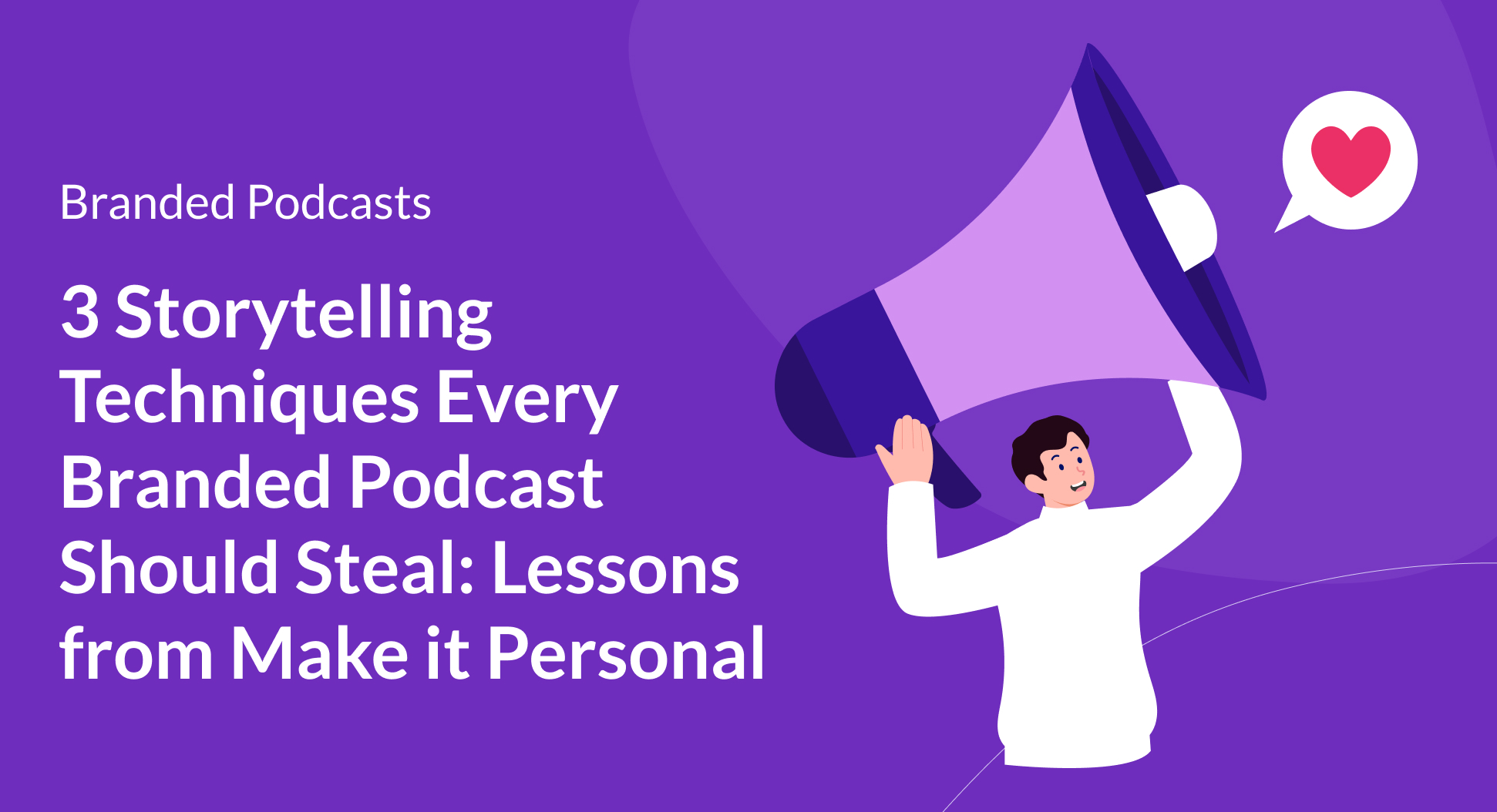Contents
In the world of branded podcasts, the concept of personality often comes up. A solidified brand personality not only makes you more memorable but also builds deeper connections with your audience. If they can relate to your personality, they have an easier time relating to you.
The best way to do this is to make sure your brand’s personality shines through everything you’re creating – from brand identity to your voice and tone, and even your marketing tactics.
There are many mediums marketers will lean on to showcase a brand’s personality and values. The medium that we’ll be talking about today is, of course, branded podcasts.
Keep reading to learn how to ensure listeners remember you and keep coming back week after week.
Let’s get started!
1. Create a Visual Brand Identity
The visual identity of your podcast is something you should try to get right from the get-go. There are lots of areas you can focus on, but we recommend zeroing in on the following five pillars of visual brand identity to bring your brand’s personality to life on your podcast.
- Podcast Cover Art: Your cover art is the face of your podcast, it’s essential that it reflects your brand’s personality. Beyond establishing a clear message about the type of show listeners can expect, it’s also the first thing to capture someone’s attention. Make sure your artwork is distinctive and iconic but not overly complicated or cluttered.
- Colors: Make sure the colors you use are reflective of your brand’s personality and overarching message. Different colors evoke different feelings. For example, red is often considered fun, playful, and loud. Blue on the other hand is generally seen as more corporate, logical, and professional.
- Typography: After you’ve chosen a logo, consider the font you’ll use on your website and across your various marketing and social channels. Choose a font that is both attention-grabbing and easy to read but remains consistent with your overall brand aesthetic.
- Imagery: Make sure all images and photography that you use in your podcast’s promotional material are representative of your brand and color palette. Imagery is powerful and establishes a strong impression.
- Audio Elements: Unlike other brands that are typically identified through visual mediums, podcasts are all about audio. Therefore, your podcast brand needs to consider all aspects of audio – everything from the opening music, transition audio, the hosts’ voice, and overall sound effects. These audio components all inform your brand and podcast’s personality, and the impression listeners will walk away with.
2. Establish Your Voice and Tone
In addition to the visual aesthetics, it’s important to get your tone of voice right.
Podcasts offer the unique opportunity to bring a human element back to your brand. Listeners get the opportunity to know the voices and minds behind your company through an intimate medium. Take advantage of this.
It’s common that your company’s mission is going to be imprinted on your podcast. But even with that being the case, it’s helpful to go through a vision, mission, and values exercise specifically for your podcast.
- Vision: Your vision refers to the general idea that guides you in the creation of your show over time. Without a clear podcast vision, there may not be enough of a thread or connection episode-to-episode. Your vision will act as your North Star so it is important to get clear on it.
- Mission: Your mission is the reason you created your podcast in the first place. What are you trying to do, who are you trying to reach and what are you trying to say?
- Values: And finally, what deals do you have as a show and how will you transmit them through your content?
Once you have an idea of what you’re trying to do, why you’re trying to do it, and who you’re doing it for – you can start to explore the how.
Think about what makes your voice distinctive from other brands in the market. How does it compare to other podcasts in your niche? Will you be light and funny or serious and sincere? It’s important to establish the tone you want to set.
Once your podcast’s vision, mission, values, target audience, and distinct voice are established, you can start to test how you’ll bring these elements to life in your podcast.
Quick Tip: Test out mentioning your brand’s values and explain how they relate to what’s being discussed. The host can even do this personally, sharing their own values and if they tie back to the company’s values!
Remember if you can get a listener to relate to your company on a deeper level, it increases the odds of them not only coming back for more episodes but also keeping your brand top-of-mind outside of the podcast world.
3. Authenticity is Key for Connections
A goal for many podcasters is to build a connection with their listeners. For a brand, it can be even more of a challenge to break out of the corporate front that many people already associate with you.
The key to injecting your brand’s personality into your podcast is to be authentic. Authenticity will allow listeners to see you as more than just a corporate podcast.
There are three key ways to ensure authenticity:
Don’t script your podcast word for word
Unless you’re following a very specific storyline, ensure that your podcast is not entirely scripted. You want to allow breathing room for creativity and a flowing conversation.
Having an overly structured script doesn’t allow for this and can come off dry, robotic, and inauthentic. Remember, the reason people tune into podcasts is that they want it to feel like an organic conversation.
Use facts to establish credibility
Nothing can ruin a reputation like sharing false or incorrect information. Ensure that whatever data you’re sharing is factual and can be backed.
As a brand, you want listeners to know that the data is coming from a well-researched and trustworthy source in the industry. Make sure to share the links to studies or other data sources that you’re grabbing intel from in your shownotes so listeners can always refer back to them.
Encourage personality from your hosts
Not only do you want to showcase the personality of your company, but you also want to give your host the freedom to add their own personality to the content.
Listeners will be hearing from your host weekly, it’s paramount that they not only connect with your brand but with the host! This connection is usually only established through authenticity, vulnerability, and a sense of fun and sincerity. If listeners don’t feel engaged and connected it’s hard to get them to come back week after week.
4. Connect with Your Audience Outside of the Show
Communicating with audiences doesn’t just have to happen on the podcast. Your podcast shouldn’t be a siloed marketing channel – you should be integrating it with other marketing tactics such as social media channels, blogs, events, newsletters, etc.
As you scale your podcast audience, encourage listeners to subscribe, follow you on social media, and sign up for your newsletter or blog to receive more resources and insights.
Whenever you can, add value by giving them exclusive access to behind-the-scenes content, discounts on an event you’re hosting, or a promo code for a product you discussed on the show.
When listeners join your other marketing channels, you’re not only able to communicate with them in another format and environment but also continue to provide them with value. Remember, there’s nothing wrong with having your brand pop up in front of your audience across various channels (in fact it can only help in making sure you are memorable).
5. Be Consistent with Messaging and Branding
Creating a strong podcast brand voice and presence all comes down to consistency. Remember, your brand should be reflected in your podcast artwork, website design, and all across your social media platforms.
When choosing podcast guests, curating content, and finding the ideal topics for your show, keep your podcast brand identity top-of-mind. Your podcast brand should be reflected in everything your listener's touch, see, read, and hear.
To ensure that your podcast’s brand is consistent across the board, create a brand style guide that identifies your podcast visuals such as color scheme, logo, typography, and even how you edit photos.
A style guide will also ensure that if you ever work with sponsors or advertisers, they will clearly understand your brand identity. The key is to consistently stay true to your brand in every aspect to let your podcast personality shine through!

.avif)







.png)

.png)




.png)
.png)
.png)
.png)